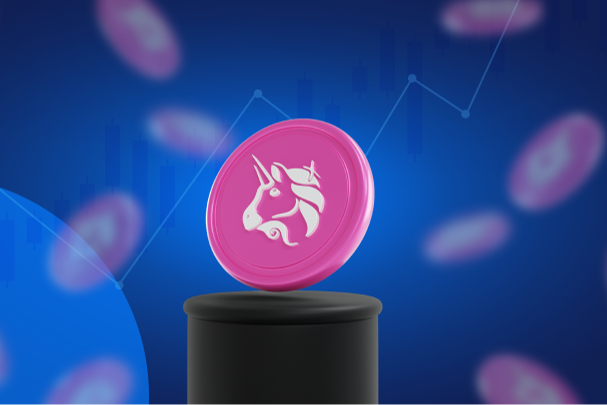2024-04-03

Decentralized exchange Uniswap has made an exciting announcement today, as it expands its operations to include the Blast network. Blast is a layer 2 solution that offers native yield for ETH and the USDB stablecoin. This expansion brings a host of benefits to Uniswap users, including lower gas costs and faster transaction speeds compared to the Ethereum mainnet.
Uniswap Announcement Tweet on (X)
In a Tuesday announcement, Uniswap stated that this launch marks the first time Uniswap users can earn native yield on LP positions, all thanks to Blast's rebasing functionality. This is a significant development for users who have been eagerly anticipating the opportunity to earn yield on their positions.
To access Uniswap on the Blast network, users simply need to visit app.uniswap.org, click on the network button, and select Blast. Uniswap also mentioned that Blast will soon be supported on the Uniswap mobile app, making it even more convenient for users to access and utilize the platform.
One of the notable features of this expansion is that liquidity providers have the option to choose between Uniswap v2 and v3 when providing liquidity on Blast. However, it's important to note that native yield is exclusive to v2 pools involving USDB or WETH. Uniswap v3's concentrated liquidity model does not support native yield due to technical constraints. Therefore, liquidity providers looking to earn native yield through rebasing Blast tokens should use Uniswap v2.
Uniswap also highlighted that Blast's rebasing mechanism introduces additional risk factors for liquidity providers, especially when it comes to negative rebasing. Unlike Uniswap v3, Blast does not have native support for this type of rebasing. Therefore, Uniswap recommends using Uniswap v2 for liquidity providers who want to earn native yield by rebasing Blast tokens. This cautionary note is important for liquidity providers to consider before deciding which version of Uniswap to use on the Blast network.
The expansion of Uniswap to the Blast network is now live through its interface, with support for the mobile app coming soon. This move further strengthens Uniswap's presence across various chains, including Arbitrum, Polygon, Optimism, Base, Binance Smart Chain, and Avalanche. Uniswap continues to expand its reach and provide users with more options for decentralized trading and liquidity provision.
With the Uniswap interface now available on Blast, users can easily swap and provide liquidity in a seamless manner. This launch is significant as it allows Uniswap users to earn native yield on LP positions for the first time, thanks to Blast's rebasing functionality. This opens up new opportunities for users to maximize their returns and participate in the growing decentralized finance (DeFi) ecosystem.
Blast, as an L2 solution, offers native yield for ETH and the USDB stablecoin. By leveraging layer 2 technology, Blast provides swappers and liquidity providers with lower gas costs and faster swaps compared to the Ethereum mainnet. This is a welcome development for users who have been experiencing high fees and slow transaction times on the Ethereum mainnet.
To use Uniswap on the Blast network, users can visit app.uniswap.org, select the network button, and choose Blast as their network. Soon, Blast support will also be available on the Uniswap mobile app, allowing for convenient swapping on-the-go. This accessibility ensures that users can take full advantage of the benefits offered by Uniswap and Blast, no matter where they are.
For liquidity providers on Blast, they can visit app.uniswap.org and choose between Uniswap v2 and Uniswap v3. Liquidity providers in pools involving USDB or WETH can continue earning native yield, similar to holding these tokens in a Blast wallet. However, it's important to note that native yield is only available for v2 pools. Uniswap v3 pools on Blast do not earn native yield due to the technical implementation details of concentrated liquidity in v3. Liquidity providers should carefully consider these factors when deciding on the most suitable option for their LP positions.
It's worth mentioning that Blast's native rebasing introduces new risk considerations for liquidity providers on Uniswap v3 on Blast, especially in the case of negative rebasing. Similar to other concentrated liquidity automated market makers (AMMs), Uniswap v3 is not designed to handle negative rebasing tokens natively. Liquidity providers with rebasing tokens on Blast should consider using Uniswap v2 instead to avoid potential complications and ensure a smooth trading experience.